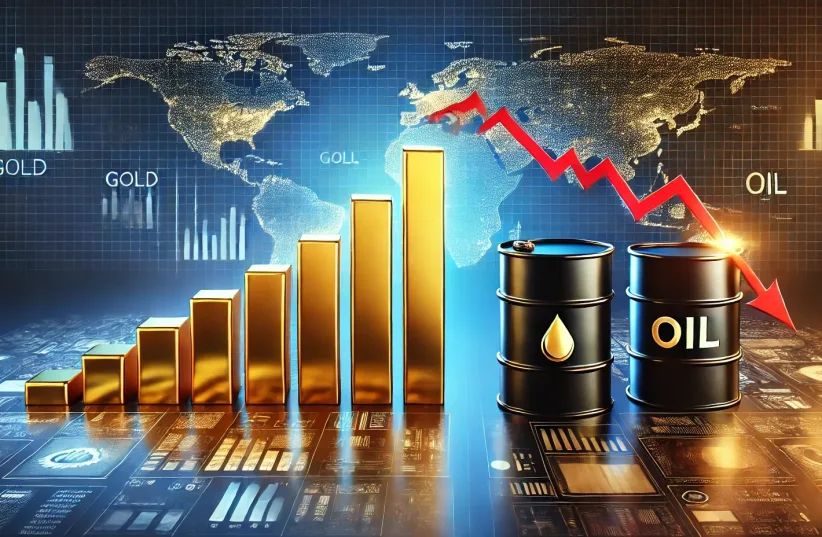
Could the split in prices be showing signs of a weakening economy?
Gold has been one of the top winners of 2024, and despite reduced global inflation rates, it continues to outclass other commodities that are showing signs of slowing.
Gold prices are hovering near all-time highs at $2,700 an ounce despite several down trading sessions spurred by the U.S. election of Donald Trump. Many other commodities, however, aren’t performing near as well.
Yellow gold and black gold
World Gold Council’s Global Head of Research Juan Carlos Artigas said research shows no long-term correlation between gold and oil. However, the strength of the U.S. dollar always influences commodity prices, at times leading very different assets to make similar moves.
“So, while oil prices do not ‘cause’ the gold price to rise — or fall — the economic environment that leads to a surge in oil can also result in higher gold prices,” he said.
 Gold and oil prices have noticeably diverged in the second half of 2024. (Source: TradingView)
Gold and oil prices have noticeably diverged in the second half of 2024. (Source: TradingView)Correlation tends to drop under weak economies
While the long-term correlation is near zero, when the correlation between gold and oil is becomes less robust and prices diverge, history shows it can be an indicator of a weaker economy.
This reduction in correlation has occurred during the 2008 economic crisis, the dot com bubble, and even in the late 1970s and early 80s.
“Oil and gold tend to perform well in periods of high inflation, albeit for different reasons,” Artigas said. “High oil prices can push consumer price baskets higher, resulting in high inflation. When high inflation persists, driven by commodities or other factors, investors look for hedges, often lifting gold investment demand — and its price — higher.”
 Gold and oil prices have not shown a significant correlation over the long term. (Source: World Gold Council)
Gold and oil prices have not shown a significant correlation over the long term. (Source: World Gold Council)Written by Tim Zyla of The Jerusalem Post

















